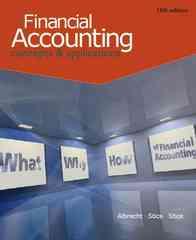Questions see file. The reading assignments and homework problems are from West?s Federal Taxation: Comprehensive Volume - 2015 Edition ?Text - Chapter 19
Corporate Distributions Not in Complete Liquidation Objectives Understand and be able to apply the federal income tax law applicable to non-liquidating distributions to determine the tax consequences to both the shareholders and the distributing corporation. Identify and understand the tax consequences of situations where successful IRS challenge could result in a constructive distribution. Understand and be able to apply the federal income tax law applicable to stock redemptions to determine the tax consequences to both the shareholders and the distributing corporation. Lesson NON LIQUIDATING DISTRIBUTIONS The Basic Rules When a corporation makes a non-liquidating distribution to its shareholders (proportionate to % stock owned), the customary description of the distribution is \"dividend\". For federal income tax purposes, such distribution may or may not be a \"dividend\". As discussed below, the word dividend has a very specifically defined meaning for federal income tax purposes. If a non-liquidating distribution is characterized as a \"dividend\Question 1 Question text On Janaury 31, 2008, X corporation distributed land to its shareholders. Which of the following information could be necessary to determine the tax consequences of this event ? Select one: The fair market value of the land The adjusted basis of the land The current year earnings and profits shareholder adjusted basis in stock a, b and c a b c and d Question 2 Question text For a redemption to be treated as a substantially disproportinate redemption ( IRC Section 302(c)(2)), the shareholder must reduce the number of shares that its owns by more than 20%. Select one: True False Question 3 Question text Corporation Y made a distribution of $95,000 to its sole shareholder. At the beginning of the year here was a deficit in accumulated earnings and profits of $75,000. During the current year earnings and profits were $85,000. The shareholder's adjusted basis in the stock was $15,000. What are the tax consequences to the shareholder ? Select one: $10 dividend reduce adjusted basis of stock by $85 $85 dividend recognize gain of $10 $10 dividend educe adjusted basis of stock by $15 Recognize gain = $70 $85 dividend reduce adjusted basis of stock by $10 Question 4 Question text Y corporation distributes land with fair market value of $450,000 to its sole shareholder. This land has adjusted basis of $625,000. The corporation has $5,000,000 of available earnings and profits. Select one: The corporation can deduct the $175,000 loss The shareholder will have $625,000 of dividend income The shareholder will report $450,000 of dividend income None of the above Question 5 Question text Before the redemption of her stock, A owned 80% of the outstanding stock. After the redemption A owned 55% of the stock. Since her post redemption % interest is less than 80% of her pre-redemption % interest, the redemption is substantaily disproportionate under IRC Section 302(c)(2) Select one: True False Question 6 Question text From the perspective of the distributing corporation, the tax treatment of the distribution of non-cash assets is the same for liquidating and non-liquidating distributions. Gain or loss is recognized. (Hint: Losses can be recognized in a complete liquidation.) Select one: True False Question 7 Question text Rust Corporation has accumulated E & P of $30,000 on January 1, 2011. In 2011, Rust Corporation had an operating loss of $40,000. It distributed cash of $20,000 to Andre, its sole shareholder, on December 31, 2011. Rust Corporation's balance in its E & P account as of January 1, 2012, is: Select one: a. $30,000 deficit. b. $10,000 deficit. c. $0. d. $30,000. e. None of the above. Question 8 Question text In the current year, Loon Corporation made a distribution in redemption of some of its shares. Loon incurred expenditures in connection with the redemption totaling $35,000 (accounting fees of $9,000, legal fees of $20,000, and brokerage fees of $6,000). The distribution was a qualifying stock redemption. How much of the $35,000 is deductible in the current year? Select one: a. $6,000. b. $9,000. c. $29,000. d. $35,000. e. None of the above. Question 9 Question text A distribution from a corporation will be taxable to the recipient shareholders only to the extent of the corporation's E & P. Select one: True False Question 10 Question text When current E & P has a deficit and accumulated E & P is positive, the two accounts are netted at the date of the distribution. If a positive balance results, the distribution is a dividend to the extent of the balance. Select one: True False







